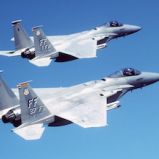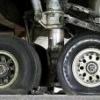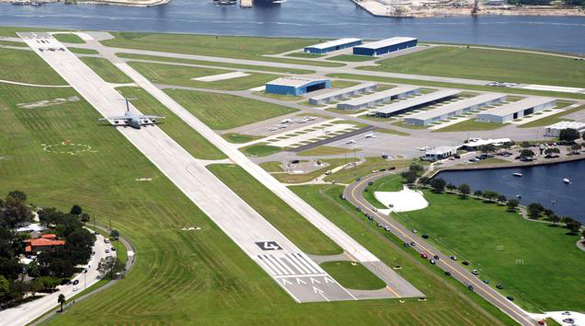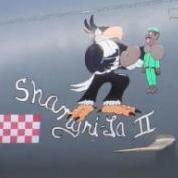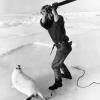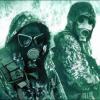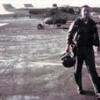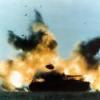Leaderboard
Popular Content
Showing content with the highest reputation on 08/28/2016 in all areas
-
6 points
-
5 points
-
The Technician program has only lasted as long as it has due to the events of 9/11. If the airline hiring boom of '99-01 had continued, the ART force would have crumbled back then. Of course a lot of the O-4/O-5 IP-types who got furloughed from the airlines, found their way back into an ART job and stayed there for 10+ years until they got their recall while us young guys troughed trying to make ends meet. Guess what. Us young guys are the ones leaving now without anyone to fill our shoes. For years, leadership had a mindset that being an ART was something everyone would give their first born child to become. Not true at all. For most, it was the only option they had to keep food on the table. Is it a terrible job? No, but it has gotten worse than it used to be. Ask all the people who now pay 4.4% into a FERS retirement on top of 5% TSP contribution on top of FEHB on top of dental converage. It ends up being $12,000 a year out of your pay. It is an antiquated program not designed well for aircrew. We should all be AGR's. It's be much easier to keep people and manage the fulltime force. Leadership's arguement is that some people want to spend 30+ years as an ART and want the double retirement. Ironically, the only people who believe that are the leadership who, for one reason or another missed the airline boat and are ART lifers or they are non-flyers. For the rest of us, being an ART is a tiresome stepping stone; an alternative to a regional airline and as more and more people leave the program, the worse it's getting for those who are still waiting for their call. Sent from my SM-G935V using Tapatalk5 points
-
Ya, I kinda feel like if you don't have the SA to not click on something at work with the words "go topless" in the address, there might be some bigger issues at hand.2 points
-
Never thought I'd have my position classified as "betting on RPAs"....but I suppose that is correct. Can't teach a Mission Planner anything, I suppose. Gobble Cock.....ptooey!2 points
-
I think we are like this dog, we got stuck in a shithole ( the ME in general and specifically the Sunni-Shia proxy war(s) ) and can't find a good way out... If we pull out (sts) Al Assad, Russia and Iran win. If we stay, we have to commit a lot of resources (lives, money, time, effort, etc.) that will probably not get a win, but merely an acceptable end state, whatever the hell that is exactly we don't even know. CATO institute opinion on the matter, decent opinion piece: http://www.cato.org/publications/commentary/its-time-admit-american-intervention-cant-fix-syria1 point
-
Looked like a hull strike or a hit on the track and drive wheel assembly themselves. No massive cook off since the spall and penetration would have been concentrated in the hull and not the turret ammo storage. All that fire is constant and save for one small secondary which since it didn't shoot straight up in a concentrated stream appeared to be something mounted or stored outside. Fire rapidly looses intensity probably fuel storage mounted on the outside hull for extended field ops. If it did hit drive wheels or power pack that'll eat a lot of the explosive effect since it's now effectively having to penetrate layered metals dissipating/misdirecting the chemical form penetrator. Probably why 2 crew members survived. All of Turkeys tanks are Western style builds (US M series and Leo types). No doubt had that been a Soviet build T series that would have been a whole lot worse and more spectacular since all the rounds sit down in the bottom of the hull. Definitely a firepower kill but not nearly as catastrophic as some of the TOW/HF vs T-72 kills from desert storm. Either way, don't park a tank exposed and stationary on the front slope of a terrain feature in full view of an anti tank team. That's just asking for them to try it. Sent from my iPhone using Tapatalk1 point
-
Took me just over 2.5 years in the C-17. Speaking specifically to a superbase like McChord, it also depends on the squadron. Mine was definitely behind the power curve compared to guys in the other squadrons in the average upgrade timeline. It probably didn't help that we had about 10 dudes show up within 2-3 months of each other in my squadron alone instead of being spread equally among the other (at the time) 4. Also depends a lot on the philosophy of the current CC/DO. To echo what champ said about TRBs - I've sat in on plenty, and it really does come down to IPs and the DO assessing the individual's attitude/work ethic/TMS write ups. In my squadron the GRACC books (aka coloring books) were huge...I've seen guys have their PCO dates moved to the right or taken indefinitely until they showed the motivation to upgrade. ...all that to say, YMMV. Just work hard, don't be a chotch, and you'll do fine.1 point
-
KC-135 ANG TFI, the TRB had nothing to do with whose turn it was, it was who is ready? Only done once a Qtr. Had a guy leave there with well over 1,500 hours and still a Co-Pilot.1 point
-
1 point
-
That's a good question. How are late rates taken care of in the 11F community currently? And how late are we talking? A brand new Capt is a lot different than a mid to senior dude in terms of the flying community.1 point
-
I don't know that I have faith in the AF to manage this correctly, either. But the sky is not falling because of this choice. I am a late rated guy, with more than two different AFSCs. I was nearly 7 years time in the AF by the time I got to my first flying unit. I was not a CAF guy and honestly probably would have had progression issues at that point in my career, if I had been. There were some issues...but I have had awesome opportunities along the way, including leading Airmen as a commander twice and both times in combat. I continue to have the opportunity to fly at this point in my career and will probably be able to fly until I retire. It has been a great ride. The only constant is that, no matter what Chang spews, the AF gets rated policy wrong more times than not. All of the current fixes will make a dent. None of them will fix the problems alone. They probably won't fix it when all implemented together. When in doubt, refer back to how the AF doesn't get it right most of the time.1 point
-
Easy, we split the cost today and store it in a safety deposit box. Whomever is on their death bed first, most likely Hacker cause he's old balls, will either get to enjoy it for a win or watch the other one enjoy it for a crushing defeat, pending the status of high alt RPA capes vs. U-2 capes. I will savor the inevitable victory so I'll share with Hacker since I expect he will be miserable for betting on RPAs (not to mention he's about to die) and I will also waive the debt for his half (which would be with interest, of course, since we're taking this so literal).1 point
-
The C17 community (can't speak for any other airframe) has been searching for volunteers to cross flow to fighters. It will be highly selective and even T1 guys can go for it if they want. Also the C17 was considered overmanned on paper so classic Air Force shut off the pipeline and way overshot the mark. Now there is a shortage of copilots and the community is as busy as it has been in a very long time. Some copilots are maxing out hours for the month, post mission crew rest is being waived, and new guys are getting ~400 hours in the first 6 months. Lastly no RPA's will be given as second assignments to C17 pilots for the time being.1 point
-
di1630s post is pretty spot on. If you don't really want to be there, the workload will probably make you miserable, especially as a new guy in the fighter world that probably performed well in his/her previous airframe, and now is getting his/her nuts crushed learning the new mission. Flying the jet, at least the Viper, is relatively simple and ing awesome. Managing formations, weapons, sensors, timelines, etc. can be very task saturating depending on the mission and mostly a function of your ability to multi task, prioritize, and your brains ability to operate under pressure and faster than you could ever imagine. I agree that anyone who ever wanted to fly fighters should give it a shot. I also agree that just about anyone with a good attitude and willingness to work their butt off will fit in just fine. The last thing I would say is that this job is ing dangerous. Just flying formation and trying to employ tactically can turn bad very quick if you don't prioritize your task. And keep in mind, our job is to kill shit, while other shit is trying to kill us. You gotta be cool with that. Sent from my SM-G920V using Tapatalk1 point
-
1 point
-
1 point
-
A valid question; here's my opinion based on my involvement as an AF O-6 at NSA working airborne programs for the Asst Dep Director for Operations, Military Affairs and post- retirement as a civilian in OSD (DARO, OUSD/ISR, and NIMA/NGA)at the time The answer is that in the very early 90s, Bill Lynn, the Director of DARPA (actually named "ARPA" at that point but returned to its original title of "DARPA" later in the 90s), and Bill Perry, the DepSecDef (not sure if they were in those exact positions in the very beginning, but by mid-90s they were) believed that unmanned aircraft had the potential to revolutionize airborne operations, starting with ISR, by reducing personal exposure to threats, enabling extended ISR (long duration ops) and save money by reducing the manpower costs in the systems. Additionally, they believed that a new acquisition concept called the Advanced Concept Technology Demonstration (ACTD) could speed up the introduction of new systems from the current (in the 90s) and painful 15-20 years. The idea was to marry up the contractor side and the government side early in the development cycle to better work out operational issues while designing the vehicles (sounds good...didn't work!). They married the two ideas and DARPA initiated the High Altitude Endurance (HAE) and Medium Altitude Endurance (MAE) programs in 1994. The HAE program envisioned two platforms; a high altitude "U-2-like" vehicle and a smaller low observable, craft for better penetration of highly defended areas, referred to as "tier 2+ and "Tier 3-" in their concept terminology. The MAE program started with an existing much less capable unmanned RPA called the "Gnat", built by General Atomics for another purpose. You'll note here that this effort was a DARPA technology development effort, not an acquisition effort responding to an approved DoD mission need. In fact, the Air Force was not particularly enamored with the idea of unmanned mission aircraft and did not support the effort; there was no AF money or manning in the POM to support it. In fact the HAE program plan itself says there is only one required outcome...and let me quote from the ARPA 6 Oct 1994 ver 1.0 HAE CONOP..."A dominant objective of the HAE UAV program is to obtain the maximum capability possible for a set, non-waiverable Unit Flyaway Price (UFP); accordingly, while there are performance objectives, the only requirement that must be met is the UFP." In other words, it doesn't have to do anything except fly, hold a camera, and cost less that $10 million a copy; no operational needs have to be satisfied. To many in the system, the real effort was for DARPA to develop the new acquisition concept, using the HAE and MAE as exemplars. The AF eventually got the aircraft because the outcome of an ACTD was to be either: 1) a failed program, so cancel it, 2) showed promise, so move on and correct issues, or 3) Provide program residuals to the eventual user (AF in this case) for them to decide to either keep and operate or dump. The ARPA and SECDEF seniors decided it flew, collected something, and (sort of) met the UFP goal (at about $15.5 each), so they chose option 3 and passed it all to the AF (both HAE and MAE, although the DarkStar segment of HAE was cancelled after it crashed on flight 2. Why they kept it was the usual case of political and industrial influence, I guess. Some of us suggested the best course of action was to dump the Global Hawk because it met few operational needs, would cost too much to upgrade (if it could ever be upgraded...too little space, too little power, too little payload), and met few of the original desired capabilities, We felt it would be cheaper to take the money and start with a clean sheet design, using the knowledge gained to drive the new (unmanned) platform (which we referred to as "Global Truck"). The estimated $200-400 million extra was consider too much money by leadership, so we stay on the "cheap" track...which I suspect has cost us an extra $5-8 Billion by now (just my guess). As for the ACTD experiment, it hit a few bumps, too. When the Predator program was turned over to the AF and told to operate it, they found the DARPA program provided no money or manpower in the DoD budget to do so, no tech data was ever developed for the Service (it was all contractor proprietary) so they couldn't fix it, no ground control systems built except the contractor's test stuff so they couldn't deploy or fly it fly, No additional money was provided by DoD or Congress to the AF so the AF started a program called "Predator 911" to find money (to operate and buy support) and manpower, and facilities, "robbing" it from the current and future years budgets, causing major disruptions for years. As for GH, the idea of killing the U-2 and replacing it with the GH didn't float either, because the GH had practically no operational capability as delivered and it took a decade to develop the RQ-4B with more capability and slightly better sensors. So, that's why we have it! BTW, as far as Perry and Lynn were concerned, the success of unmanned systems since then probably indicates their vision was a success, and I can't really argue that they'd be wrong. Its all in your perspective.1 point
-
Never experiencing active duty is like saying you never got to experience prison or priest molestation. Sent from my iPhone using Tapatalk1 point
-
Go UPT. If you decide that you want to try RPA at some point, believe me, you'll have to little more than a Bewitched wiggle of your nose and you'll wake up in a dumpster in southern NV. Even in the reserves. Going from AFRC RPA to manned?...seen it happen, but it's really rare, and only with prior rated.1 point
-
I am currently an AD RPA pilot. It is by far the worst experience of my life. For reference my other shitty life experiences include: 12 hurricanes/cyclones/tornados, a couple of earthquakes, 17 car crashes*, a divorce, and approximately 100 rocket attacks. *Wear your seatbelt it works.1 point
-
Exactly. Big Blue will not see a problem until they turn around and all their mobility pilot have left. Just like the fighters.-1 points

